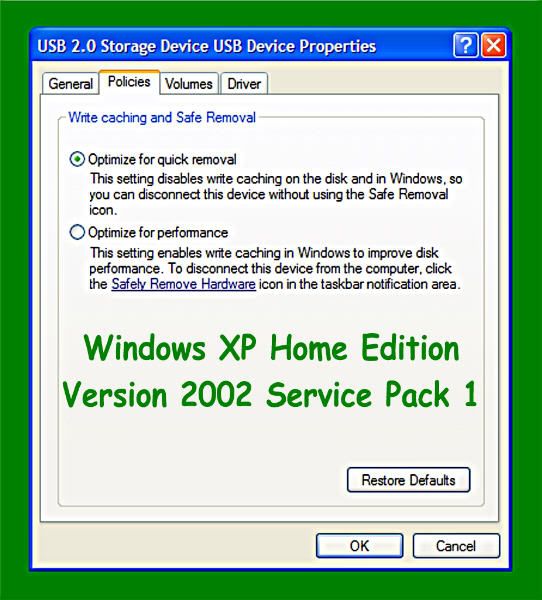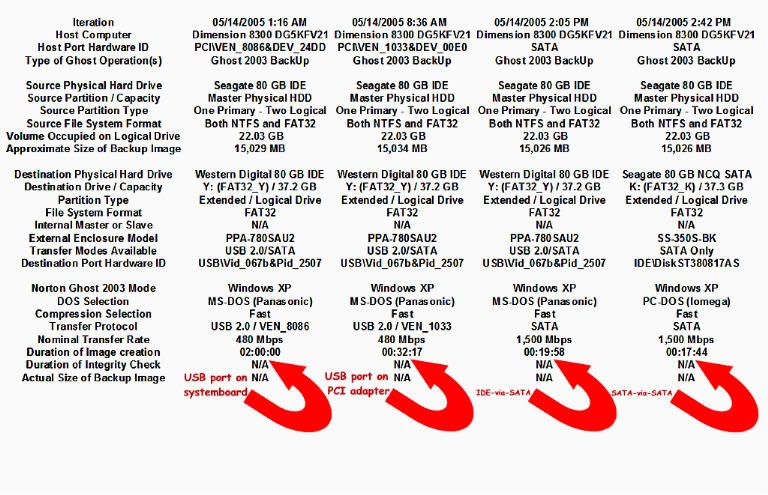Christer
As you recall, my first tests with the Seagate hard drives showed very good results whether on the HighPoint controller or the VIA controller. When I repeated the test, the results were much different.
Quote:I repeated the tests using the Seagates... I wanted to confirm my findings, and low and behold, the results were different this time!!!! Computers, ya gotta love 'em!
I put one Seagate on the VIA primary channel as master and one Seagate on the HighPoint primary as master and sending the image from the VIA Seagate to the HighPoint Seagate, I got a creation speed of 983 MB/min (slower than the 'used IBM to Seagate of 1114 MB/min!), and now when I imaged from the HighPoint Seagate to the VIA Seagate, I now got 142 MB/min creation speed! I do not know what has changed to make the results different this time, but I tried serveral times and each test was similar in results!
If you recall, on my original post I got an image creation rate of 1195 MB/min going from the Seagate on the HighPoint to the Seagate on the VIA controller, and got 1363 MB/Min going from the Seagate on VIA to the Seagate on the HighPoint controller. |
|
Well, after your test results of imaging Fat32 vs NTFS formated partitions, I decided to go back and repeat the tests using just the Seagates and varying the formatting of the partitions and here are the results:
In each case, I'm showing the final image creation speed, and using 'no compression' to create the images.
One Seagate (120 GB) hard drive was on the HighPoint Controller, primary channel as master and the other Seagate (120 GB) was on the VIA Controller, primary channel as master, and the arrows show the direction of the image creation:
On HighPoint---------------On VIA------------Speed
Seagate NTFS >>>>> Seagate NTFS 1185 MB/min
Seagate NTFS <<<<< Seagate NTFS 944 MB/min
Seagate FAT32 >>>>> Seagate NTFS 786 MB/min
Seagate FAT32 <<<<< Seagate NTFS 1243 MB/min
Seagate FAT32 >>>>> Seagate FAT32 136 MB/min
Seagate FAT32 <<<<< Seagate FAT32 1241 MB/min
Seagate NTFS >>>>> Seagate FAT32 140 MB/min
Seagate NTFS <<<<< Seagate FAT32 1265 MB/min
Apparently, just by accident, I must have chose the best combinations to image from HighPoint to VIA or from VIA to HighPoint on my first tests. And it's clear you do not want to image to a hard drive on the VIA controller if the partition is FAT32, but a NTFS partition is quite good.
************************
I then switched the Seagate on the VIA Controller to the HighPoint Controller, secondary channel as slave, and left the other Seagate on the HighPoint Controller, primary channel as master:
On HighPoint-------------On HighPoint-------Speed
Seagate NTFS >>>>> Seagate NTFS 1110 MB/min
Seagate NTFS <<<<< Seagate NTFS 1145 MB/min
Seagate FAT32 >>>>> Seagate NTFS 786 MB/min
Seagate FAT32 <<<<< Seagate NTFS 1054 MB/min
Seagate FAT32 >>>>> Seagate FAT32 767 MB/min
Seagate FAT32 <<<<< Seagate FAT32 1218 MB/min
Seagate NTFS >>>>> Seagate FAT32 916 MB/min
Seagate NTFS <<<<< Seagate FAT32 1291 MB/min
Now with the Seagates both on the HighPoint controller, there are some differences (and I can only wonder why :-) ), but not the dramatic differences seen imaging to a VIA FAT32 partition.
************************
Now I put both Seagates on the VIA controller, one on the primary as master and the other on the secondary as master:
On VIA-------------------On VIA----------Speed
Seagate NTFS >>>>> Seagate NTFS 1171 MB/min
Seagate NTFS <<<<< Seagate NTFS 1341 MB/min
Seagate FAT32 >>>>> Seagate NTFS 829 MB/min
Seagate FAT32 <<<<< Seagate NTFS 144 MB/min
Seagate FAT32 >>>>> Seagate FAT32 131 MB/min
Seagate FAT32 <<<<< Seagate FAT32 144 MB/min
Seagate NTFS >>>>> Seagate FAT32 135 MB/min
Seagate NTFS <<<<< Seagate FAT32 1300 MB/min
Again, imaging to a FAT32 partition on the VIA controller was not the best option.
So, it looks like if you have a VIA VT82C686B southbridge controller chip on your system, you would get much better performance if you image to a NTFS partition rather than to a FAT32 formated partition.






